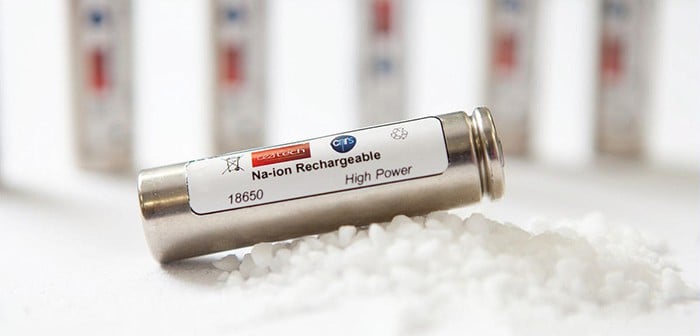It was about time that we change the main ingredients of the batteries we use in our daily life. The portable batteries we use in our phones, cars and almost all other things use Lithium ions. The first generation batteries used Nickel-Cadmium but this had its own set of demerits. The batteries were very heavy and that was a big letdown in making them portable.

Compared to the Nickel-Cadmium batteries, Lithium ion batteries have the characteristics of low maintenance and higher lifespan. The energy density too is almost twice as much as those Nickel-Cadmium batteries. That means if we would have used Nickel-Cadmium batteries in modern day smartphones, then we would have needed at least three of those batteries connected in series.
But, Lithium is not exactly an abundant material; it is in fact, relatively rare and can be found only in some particular places (Bolivia, Chile, etc.). Adding to that, the booming industries of budget-smartphones and tablets and not-so-hard-on-pockets gearless scooters have compelled the manufacturers to look for some alternative to reduce the production costs. So, reducing the cost of the batteries by replacing Lithium with something equally substantial was something that they have been looking for quite a few days now.
As a result, scientists have also been in search for a substitute material which may have almost the same capability as Lithium in storing and distributing energy. At the end of the month of November 2015, a group of French scientists from CEA, CNRS, French National Centre for Scientific Research and France’s Alternative Energies and Atomic Energy Commission have jointly declared in a press release that they have become able to produce a prototype of a sodium-ion battery which can store electricity in the same industrial standard as Lithium ion batteries.
The reasons why this development can be the next best thing in the market of technology are as follows:
- Compared to Lithium, Sodium is available abundantly in the planet. So, obviously the use of Sodium ions would bring down the price range of the batteries we use in daily life and make phones, cars and other gadgets relatively cheaper.
- In case of Lithium ion batteries, the batteries need to retain at least 30% of their charge while in storage to keep the active materials undamaged. This, however, increases the chances of short circuit and fire resulting of that during shipping. But, the Sodium cells can be drained up to zero charge without causing any sort of damage to the active materials, which makes these batteries quite safe while storing or shipping.
- In periodic table, Sodium lies just beneath Lithium, in the same period, which makes the usability and the operation of those two materials quite alike; so, as a common user, you would not find any differences in using both those batteries. As both Lithium and Sodium are alkali metals, both of them share some identical chemical properties including electrochemical reactivity and ionicity. They also have almost similarly comparable electrochemical performances and synthetic protocols which make Sodium ion batteries prone to successful development into batteries like its Lithium ion counterpart.
But, like everything else, here too all the advantages come with a little catch. There are some problems that the developers have not yet been able to resolve. Those disadvantages are:
- The size of the batteries is on a plus side and they are slightly larger than the AA batteries housing the same volt.
- The next big problem is the fact that the Sodium batteries lose 0.3 volts if you compare them to Lithium batteries. It means, it will drain out charge faster than the Lithium ion batteries. For every 3 volts of battery consumption for Lithium ion batteries, the Sodium ion batteries will lose 3.9 volts of charge. This unfortunate factor makes them pretty ordinary as charge carriers.
Despite those obvious problems, the technology of developing Sodium ion batteries as a substitute of the pricey Lithium ion has been welcomed by the electronics industry in general. The researchers of CEA believe that electrochemistry and solid state chemistry would enable them in creating some tailor made designs to overcome the problems they are facing now. The prototypes are still strictly in research criterion, but it can be hoped that they will pretty soon hit the mass market.
Image credit: cnrs.fr (Edited)